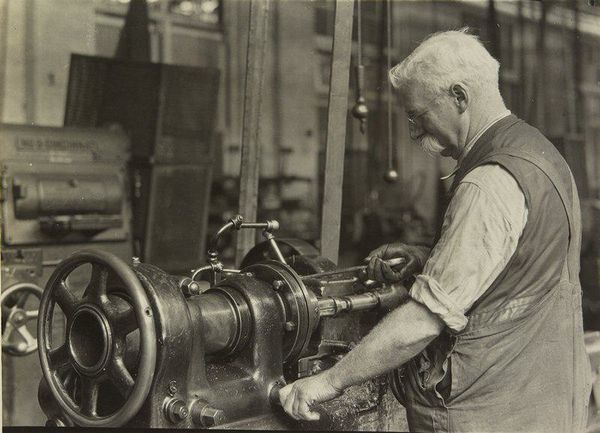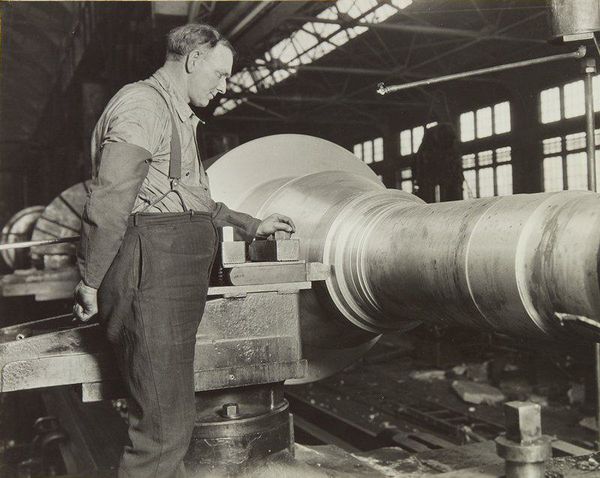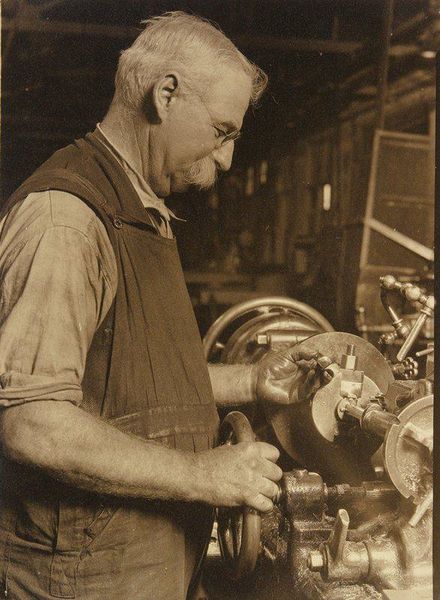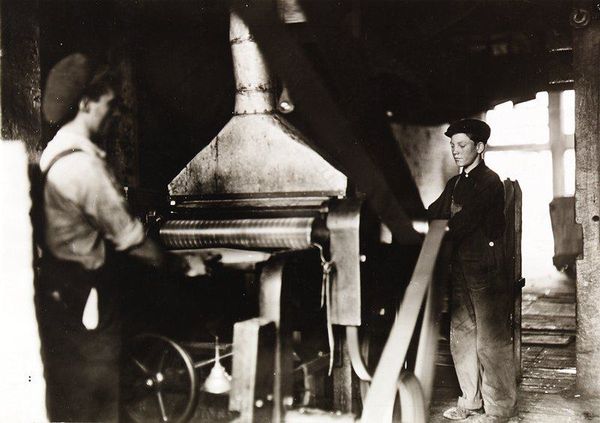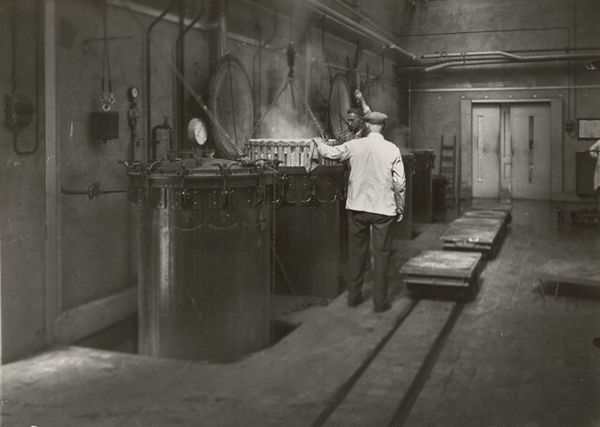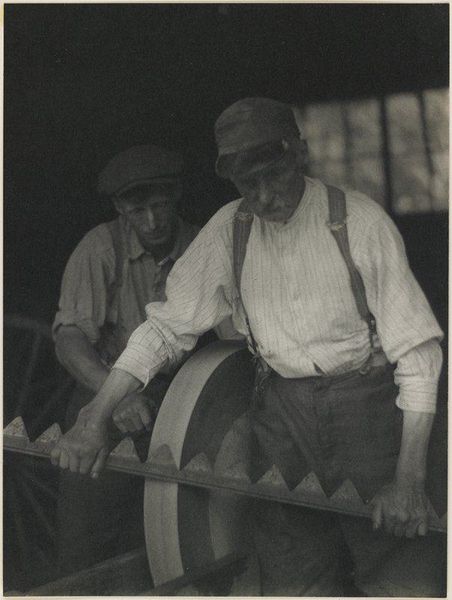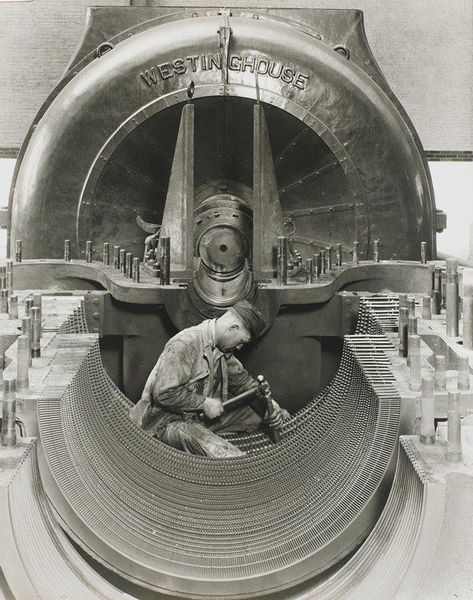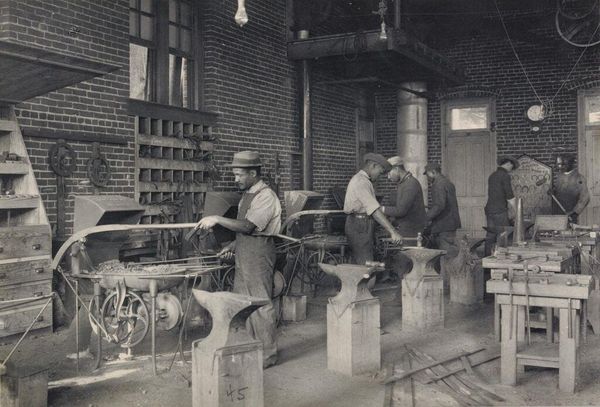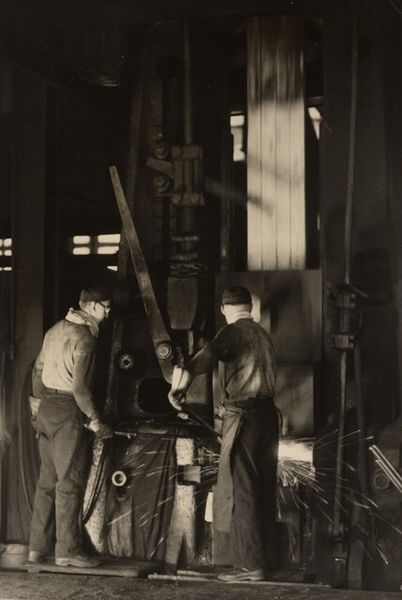
gelatin-silver-print, photography, gelatin-silver-print
#
portrait
#
gelatin-silver-print
#
black and white photography
#
portrait image
#
photography
#
black and white
#
gelatin-silver-print
#
ashcan-school
#
realism
Dimensions: 7 9/16 x 9 9/16 in. (19.21 x 24.29 cm) (image)7 3/4 x 9 11/16 in. (19.69 x 24.61 cm) (sheet)
Copyright: No Copyright - United States
Lewis Hine captured this image of an engineer in a power plant, with what looks like a camera and film, at a time when technology was changing the world. The beauty of this image lies in its texture. See how the light plays across the engineer's clothing, each fold and wrinkle telling a story of labor and wear. It's almost sculptural, the way the light defines his form against the dark machinery. There's a realness to the way Hine lets the details speak, not hiding the grit, but embracing it. Look at the engineer’s hands on that wheel. It is a moment of action, of control, of human interaction with the machine. It is about the intimacy of labor, and the dignity of a working person. Hine’s approach reminds me of the social realists, artists like Käthe Kollwitz, who also found beauty and pathos in the everyday lives of working people. It's a reminder that art can be found anywhere, in any subject, if you just take the time to look.
Comments
minneapolisinstituteofart almost 2 years ago
⋮
Lewis Hine was a documentary photographer, educator, and social reformer. Trained in sociology, Hine taught at the progressive Ethical Culture School in New York City before turning his attention to photography. As a photographer for the National Child Labor Committee (NCLC), Hine traveled the United States to document children in unsafe working conditions in factories, mines, fields, and city streets. Over ten years, he created an indelible record of the human cost of an exploitative labor market, documenting the tired faces of children at the end of their shifts, or even children mutilated by industrial machinery. These disturbing photographs were used in publications and presentations created by Hine and the NCLC, and ultimately promoted sweeping policy changes designed to protect children.
Join the conversation
Join millions of artists and users on Artera today and experience the ultimate creative platform.
